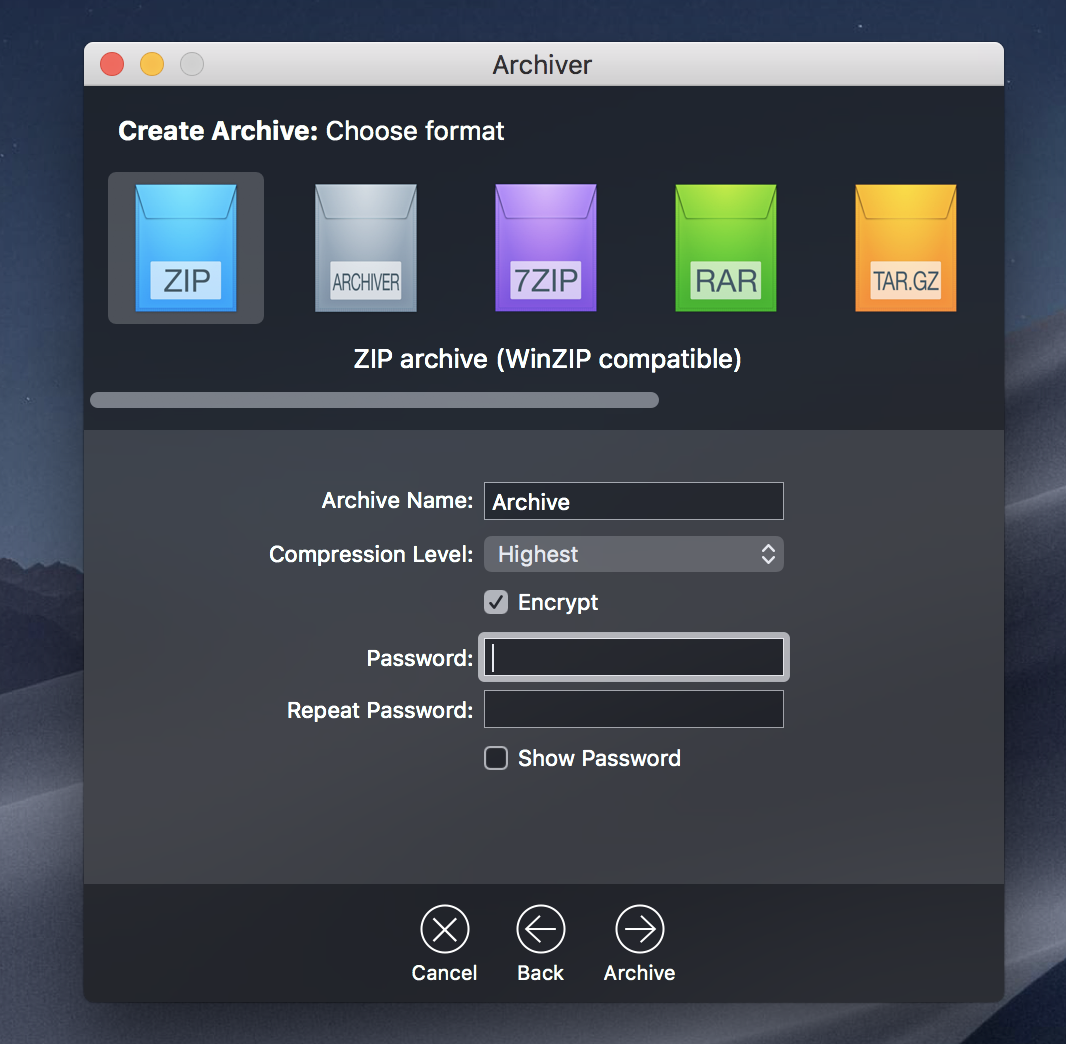

- #PASSWORD PROTECTED ZIP FILE NOT PROMPTING FOR PASSWORD MAC PC#
- #PASSWORD PROTECTED ZIP FILE NOT PROMPTING FOR PASSWORD MAC DOWNLOAD#
- #PASSWORD PROTECTED ZIP FILE NOT PROMPTING FOR PASSWORD MAC MAC#
Enter the following command: unzip -P password (Drag zip file) -d (Drag your destination folder)ģ. Or click Command + Space bar to open Spotlight search and search for Terminal.Ģ. If you’ve forgotten the password of the zip file that you’ve encrypted, you’ll need to use the terminal to open the file.ġ.

After the password has been entered, the compressed zip file or folder will now be extracted, and you’ll be able to access the folder. To open an encrypted zip file, double click on it and enter the password when you’re prompted.
#PASSWORD PROTECTED ZIP FILE NOT PROMPTING FOR PASSWORD MAC PC#
Normally, you can open a password protected zip file as you do on a Windows PC – just double click and enter the password to open it. Open Password Protected zip FilesĪfter you’ve password protected your files using the Terminal, at some point, you’ll need to access it. The zip files will now be password protected. Enter your password again to verify your decision and press Enter. Enter the password you want to use to protect the folder and click Enter. To password protect the selected zip files, enter the following command: zip -er Įxample: In the command, it will look like this: $ zip -er ~/Desktop/encrypted.zip ~/Documents/Confidential/Ĥ. In Terminal, make sure that the destination of the file you want to protect is correct.ģ. Or click Command + Space bar to open Spotlight search and search for Terminal. Click Command + Space bar to open Spotlight search and search for Terminal.Ģ. Select the file or folder you want to protect. Password Protect zip Filesīefore you start to password protect your zip files, you need to location them in your file manager.ġ. You’ll see the zip file in the same location with the with a. If the file is too large, you should expect it to take some time. Depending on the file size, it can take a long time to zip and unzip a folder. Right click on the file > select Compress. You can zip and individual file if it’s too large, or you can put multiple files into a folder and zip the whole folder.Ģ. Find the files or folder you want to zip. When the person receives it, the file can be extracted, and it returns to its original size. If you’re trying to send large files over the internet, zipping will allow you to compress the files so that it’s much smaller and you can send it. A zip is a file extension that’s supported by different operating systems. When a file is zipped on your Mac, the utility compresses the files into a smaller size without the file losing quality. This utility allows you to protect zip files so a password is needed to extract the contents of the zip file.
#PASSWORD PROTECTED ZIP FILE NOT PROMPTING FOR PASSWORD MAC DOWNLOAD#
If you want to password protect your zip files on your Mac, you don’t need any extra add ons or to download any software, you can use the zip utility that’s built into your Mac.

If you work in an open environment where multiple people work in the same location and can log into the same PC, password protecting your zip files is important.
#PASSWORD PROTECTED ZIP FILE NOT PROMPTING FOR PASSWORD MAC MAC#
Ransomware is very common and being aware that your Mac could be hacked at any time is very useful to know.


 0 kommentar(er)
0 kommentar(er)
